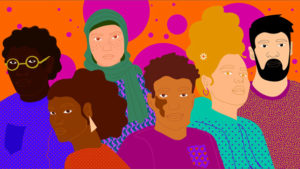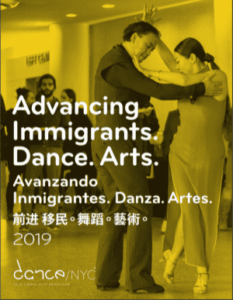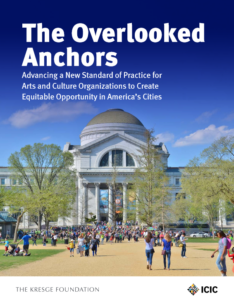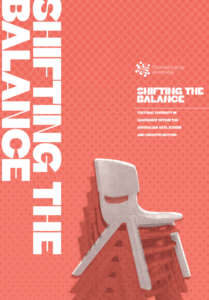September
2019
September 9, 2019
NASAA News and Current Information
See You at the NASAA Leadership Institute!
 Next week, state arts agency council and board members, executive directors, and deputy directors, along with regional arts organization executives and colleague organization leaders, gather in Providence, Rhode Island, for NASAA’s 2019 Leadership Institute. It will be a gathering packed with practical training, meet-and-greet opportunities and arts experiences. We’re so grateful for the efforts and can-do attitude of our host, the Rhode Island State Council on the Arts! If you missed on-line registration and find that you can join us, you are welcome to register on site at the conference. Hope to see you soon!
Next week, state arts agency council and board members, executive directors, and deputy directors, along with regional arts organization executives and colleague organization leaders, gather in Providence, Rhode Island, for NASAA’s 2019 Leadership Institute. It will be a gathering packed with practical training, meet-and-greet opportunities and arts experiences. We’re so grateful for the efforts and can-do attitude of our host, the Rhode Island State Council on the Arts! If you missed on-line registration and find that you can join us, you are welcome to register on site at the conference. Hope to see you soon!
One by One, a Little Becomes a Lot
Whether rising up to protect the arts, revitalizing communities or providing opportunities to experience creativity and connection, when we come together we achieve so much. This is why we ask for your participation in NASAA’s Annual Fund. When we all support NASAA’s mission to strengthen state arts agencies, we all are stronger! Your gift to NASAA is a potent message about how much you value government support for the arts. Your involvement strengthens our entire field and directly impacts our ability to serve state arts agencies. Whatever level is right for you, your support matters. Please do your part and give to NASAA today. Thank you!
Breaking through Barriers to Racial Equity
 The Stanford Social Innovation Review has a collection of 10 essays about diversity, equity and inclusion. The series, Breaking through Barriers to Racial Equity, was designed to shake up contemporary discussions about diversity, equity and inclusion. The collection’s introduction, for example, describes the commonly used acronym “DEI” as decorous and innocuous, suggesting that abstract language can be a distraction and signaling that each essay presents challenging questions and provoking ideas. The essays are paired with a webinar, Addressing Marginalization: Redirecting Strategies of Diversity, Equity, and Inclusion in the Workplace, which is available to stream on-line for free.
The Stanford Social Innovation Review has a collection of 10 essays about diversity, equity and inclusion. The series, Breaking through Barriers to Racial Equity, was designed to shake up contemporary discussions about diversity, equity and inclusion. The collection’s introduction, for example, describes the commonly used acronym “DEI” as decorous and innocuous, suggesting that abstract language can be a distraction and signaling that each essay presents challenging questions and provoking ideas. The essays are paired with a webinar, Addressing Marginalization: Redirecting Strategies of Diversity, Equity, and Inclusion in the Workplace, which is available to stream on-line for free.
New Research on Immigrant Dance Artists
 As part of a new initiative—Immigrants. Dance. Arts.—Dance/NYC has produced a series of reports aimed at fostering equity and inclusion of immigrant artists in dance. The latest report in the series highlights the findings of a survey of immigrant dance artists living in New York City. Dance/NYC deployed the survey after earlier research revealed the lack of publicly available data on the immigrant dance work force. It found, among other things, that one-quarter of immigrant artists do not get paid for their work and many have trouble connecting to resources and funding.
As part of a new initiative—Immigrants. Dance. Arts.—Dance/NYC has produced a series of reports aimed at fostering equity and inclusion of immigrant artists in dance. The latest report in the series highlights the findings of a survey of immigrant dance artists living in New York City. Dance/NYC deployed the survey after earlier research revealed the lack of publicly available data on the immigrant dance work force. It found, among other things, that one-quarter of immigrant artists do not get paid for their work and many have trouble connecting to resources and funding.
Arts and Culture Organizations as Community Anchors
 A new report published by the Initiative for a Competitive Inner City, with funding from The Kresge Foundation, discusses how arts and culture organizations can be “anchor institutions” in their communities. The paper, The Overlooked Anchors: Advancing a New Standard of Practice for Arts and Culture Organizations to Create Equitable Opportunity in America’s Cities, presents a framework for how arts and culture groups can help strengthen their communities as hospitals, universities, large employers and other anchor institutions do. The report distinguishes between the anchor-institution framework, which focuses solely economic growth, and creative placemaking, which aims for economic as well as social, physical and cultural outcomes. But it also notes that the two approaches are complementary and mutually beneficial.
A new report published by the Initiative for a Competitive Inner City, with funding from The Kresge Foundation, discusses how arts and culture organizations can be “anchor institutions” in their communities. The paper, The Overlooked Anchors: Advancing a New Standard of Practice for Arts and Culture Organizations to Create Equitable Opportunity in America’s Cities, presents a framework for how arts and culture groups can help strengthen their communities as hospitals, universities, large employers and other anchor institutions do. The report distinguishes between the anchor-institution framework, which focuses solely economic growth, and creative placemaking, which aims for economic as well as social, physical and cultural outcomes. But it also notes that the two approaches are complementary and mutually beneficial.
Increasing Cultural Diversity in Arts and Culture Leadership
Shifting the Balance is a new report from Diversity Arts Australia benchmarking the cultural and/or linguistic diversity of arts leaders in Australia. The report, which finds that 51% of the country’s major cultural organizations have no diverse leaders, includes recommendations that are also applicable to the arts and culture sector in the United States. Recommendations include setting goals for increasing the diversity of organizational leadership, researching intersectional barriers to inclusion, and monitoring and evaluating the impacts of efforts to foster diversity, equity and inclusion.
is a new report from Diversity Arts Australia benchmarking the cultural and/or linguistic diversity of arts leaders in Australia. The report, which finds that 51% of the country’s major cultural organizations have no diverse leaders, includes recommendations that are also applicable to the arts and culture sector in the United States. Recommendations include setting goals for increasing the diversity of organizational leadership, researching intersectional barriers to inclusion, and monitoring and evaluating the impacts of efforts to foster diversity, equity and inclusion.
In this Issue
From the President and CEO
State to State
- Wyoming: Health and Wellness through the Arts
- North Carolina: Come Hear NC
- Maryland: Teaching Artist Credentials
Announcements and Resources
More Notes from NASAA
Research on Demand
SubscribeSubscribe
×
To receive information regarding updates to our newslettter. Please fill out the form below.
